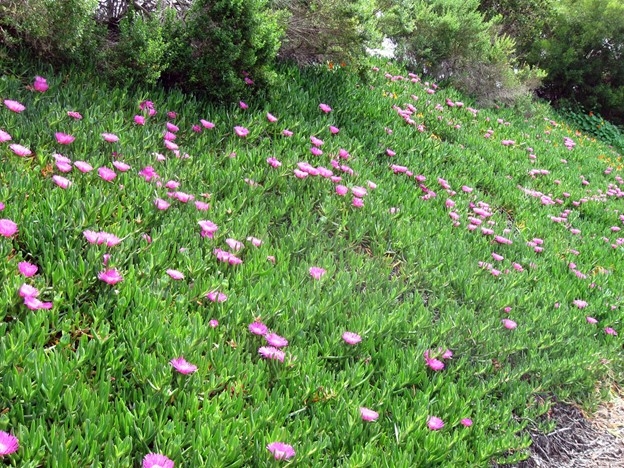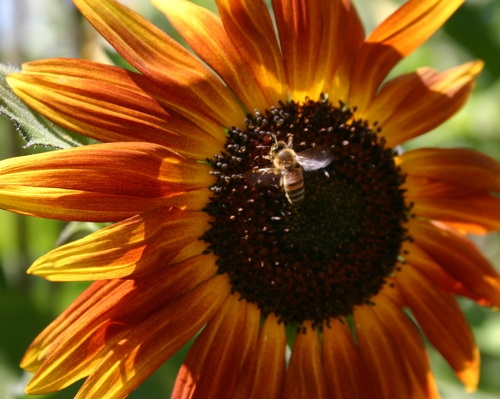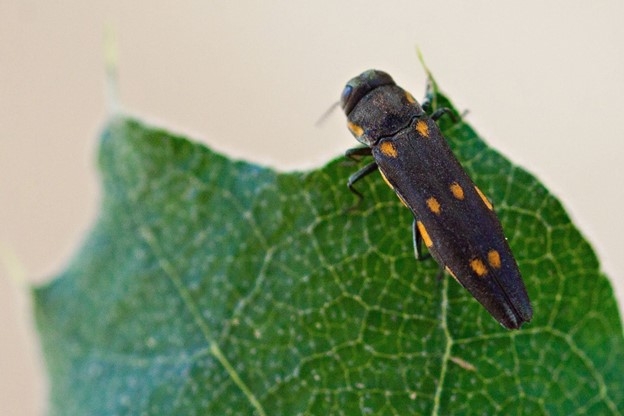- Author: Samantha Dowdall
- Editor: Jennifer Hopkins
Are you interested in volunteering for the UC Master Gardener Program of San Luis Obispo County? Applications for the 2024 training class are now being accepted!
If you would like to apply in person, pick up and return an application to:
UC Master Gardener Program
2156 Sierra Way Ste C
San Luis Obispo CA 93401
Fee waivers for this 18 week training course are available!
UC Master Gardener Program training class fee waiver . Please note, a limited number of fee waivers are available.
During our comprehensive 18-week training program, you will learn scientific, research-based techniques in home horticulture, pest management, and sustainable landscape practices. You'll learn about plants that will encourage beneficial insects and provide food and safety for birds and other pollinators. This course will help prepare you for sharing your knowledge with others in our community so that they, too, may become successful and environmentally responsible gardeners.
Our volunteers share a keen interest in gardening but we also value the rich and varied skills they bring to the program from their own work and personal experiences. You are encouraged to use these talents to help us improve and enhance our outreach efforts. Examples of these are:
- public speaking
- teaching and training
- research
- being bilingual/multilingual
- organizational skills
- fundraising
- writing
- photography
The following steps are required to become a certified UC Master Gardener Program volunteer:
- Apply online or pick up and drop off an application at 2156 Sierra Way San Luis Obispo CA
- Interview
Upon acceptance:
- Complete a Live Scan fingerprinting and Department of Justice background check.
- Attend an 18-week training class, once a week from January to May.
- Complete weekly reading and home-study assignments and participate in hands-on learning activities.
- Pass an open-book cumulative exam with a minimum score of 70%.
After graduating, certified UC Master Gardener Program volunteers must complete:
- 50 hours of volunteer time in support of any program-related functions within the first year
- In subsequent years, 25 hours of volunteer time and 12 hours of approved continuing education hours per year to enhance their knowledge base to maintain certification
IMPORTANT DATES
To help you decide if this program will fit into your schedule, please review the upcoming deadlines and time commitments:
June 2023 Applications open
September 30, 2023 Applications due
October 2023 Interviews
Early November Acceptance notifications sent
November 14, 2023 Orientation meeting
January – May 2024 Training classes every Tuesday from 12:30-4 PM
May 2024 Graduation
INFORMATIONAL MEETINGS
If you would like to meet some of our volunteers and learn more about the UC Master Gardener Program, please come to one of our informational meetings:
Saturday, September 9, 2023 2:00pm (Zoom)
Tuesday, September 12, 2023 (in person)
2156 Sierra Way, San Luis Obispo 93401
We will be posting updates and reminders as these dates get closer. We hope to see you soon!
If you have questions, please email our help line at anrslomg@ucanr.edu
- Editor: Jennifer Hopkins
Invasive Spotlight: Goldspotted Oak Borer (GSOB)
Adult goldspotted oak borer, Agrilus auroguttatus, on an oak leaf. Photo by Mike Lewis, Center for Invasive Species Research, Bugwood.org
There are several flatheaded boring beetles in California, however only a few are of particular concern. The goldspotted oak borer (GSOB), Agrilus auroguttatus, is a metallic wood-boring beetle that threatens our native trees. Since it was introduced to Southern California on contaminated firewood in the early 2000s, this pest has caused extensive damage to woodlands and native oaks.
What does the goldspotted oak borer look like?
Adult GSOB are 0.4 inch long and 0.08 inch wide with bullet-shaped bodies. They are black with an iridescent green sheen and six distinct gold spots on their back.
What damage does the goldspotted oak borer cause?
Goldspotted oak borers only attack oaks (Quercus spp.). They are particularly damaging to coast live oak and California black oak. Adult beetles lay eggs on host trees and the larvae bore into the wood, feeding on the tree's vascular tissue. The larvae feed on the tree until they pupate into adults and exit the tree, leaving D-shaped exit holes in the bark. Extensive GSOB feeding can girdle trees, disrupting water and nutrient uptake and eventually causing the tree to die.
What can you do about the goldspotted oak borer?
Don't move firewood! The most important way to prevent the spread of invasive wood borers like GSOB, is to buy firewood where you're going to burn it. If you live in an area of Southern California where GSOB is present, avoid planting susceptible trees. If you need to remove an infested tree, keep the cut wood away from healthy oaks and tarp or grind the wood to kill any larvae present. To report possible sightings, fill out the Goldspotted Oak Borer Symptoms Reporting Form at https://ucanr.edu/sites/gsobinfo/What_You_Can_Do/Report_GSOB_Symptoms/
To learn more about this invasive pest visit the UC IPM Pest Notes: Goldspotted Oak Borer or the UC ANR Goldspotted Oak Borer page.
- Editor: Jennifer Hopkins
Invasive Spotlight: Highway Iceplant

You've probably seen this invasive plant growing along highways or the coast in California. Highway iceplant, Carpobrotus edulis, was intentionally introduced to prevent soil erosion along highways and coasts but it has since invaded many different ecosystems and outcompetes native plant species. The California Invasive Plant Council (Cal-IPC) rated this plant as an A-1 species, meaning it is one of the “most invasive and damaging species that are widespread in the state.”
What does highway iceplant look like?
The highway iceplant, also known as the hottentot fig, is a succulent with fleshy three-sided stems. It grows as dense ground-covering mats and produces large yellow to light pink flowers in the late spring and early summer.
What can you do about highway iceplant?
For decades iceplant was widely promoted as an ornamental landscape plant. While its popularity has dwindled, it may still be available for sale in some nurseries. Avoid buying and planting iceplant. Instead, choose plants native to California and visit the PlantRight website to find similar-looking alternative plants. If you have iceplant on your property, it can easily be removed by hand pulling. Be sure to get all live shoots as it can regrow from any node left behind.
For more information, visit the UC IPM Pest Notes: Invasive Plants or the Cal-IPC Plant Report on the highway iceplant.
- Author: Amy Breschini

The UC Master Gardeners are now accepting applications. The deadline is quickly approaching! Please have your application postmarked by November 20th.
Please click on the underlined links below to find the application and more information about our program.
Photo by Cindy Muther
2009 Open House Invitation
Master Gardeners Program Information
Application for Master Gardener Program




